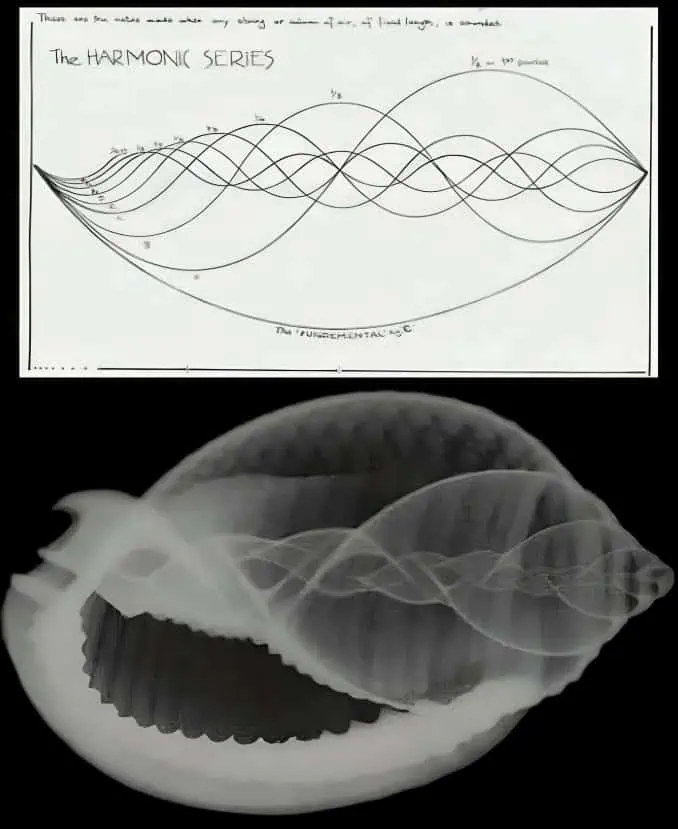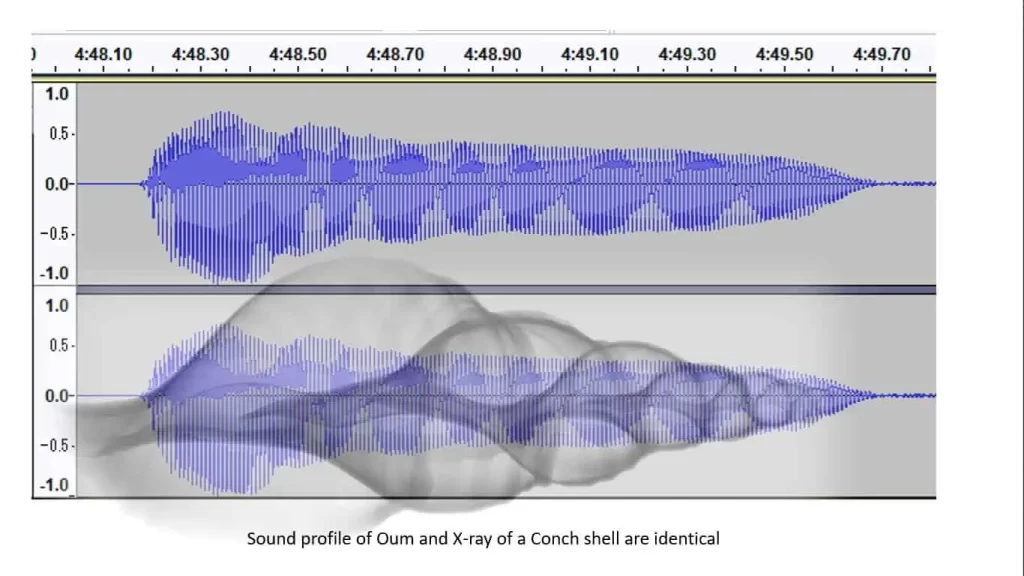Recently, a meme comparing harmonic sine waves with the structure of a conch shell has sparked interest online. This fascinating visual comparison prompts an exploration of the links between mathematics, nature, and philosophical debates about existence and creation.
Visual Similarities
At first glance, harmonic wave graphics and conch shell x-rays appear strikingly similar. Harmonic waves, which depict the first nine harmonics, oscillate around a central line. In contrast, the conch shell features a spiral structure reflecting natural growth patterns that intrigue both scientists and artists.

Understanding Harmonics
Harmonic waves are defined by proportional relationships. Each harmonic is an integer multiple of a fundamental frequency, creating structured resonance. The conch shell’s spiral, however, is a logarithmic spiral, growing proportionally to its distance from the center. While visually similar, there’s no direct correlation between the two.
Mathematics in Nature
Overlaying harmonic waves highlights the universal language of mathematics. It describes patterns from sound waves to shell architecture, raising questions about whether these patterns are coincidental or indicative of a grand design.
Philosophical Perspectives
This exploration leads to philosophical debates among atheists, agnostics, and believers. Some see mathematical beauty as evidence of a creator, while others believe natural processes alone explain these phenomena.
Mathematical Observations
When all harmonic waves have equal amplitude, they don’t resemble a conch shell, underscoring the complexity of natural forms and challenging the notion that mathematical relationships always equate to physical forms.
The Beauty of Patterns
Despite their complexity, the idea of interconnectedness resonates in nature discussions. From fractals to Fibonacci sequences, mathematics underpins many structures. This suggests a profound universal connection, even if direct correlations aren’t always apparent.
Musical Connections: Harmonics and Conch Shells
The interplay of music, mathematics, and spirituality is evident in the comparison between harmonic waves and conch shells. This analysis uncovers deep connections beyond mere visual similarities.

Key Themes
Music is rooted in science, with Pythagoras highlighting mathematical relationships in music theory. Leonard Bernstein emphasized that music transcends calculations and is deeply felt, particularly in Indian music traditions like the Raaga system.

In the Bhagavad Gita, conch shells symbolize duty (Dharma) and divine connection. The sounds of conches blown by Krishna and the Pandavas serve as spiritual calls to awaken consciousness.
The conch shell, especially Krishna’s Panchajanya, symbolizes creation and victory. Each Pandava’s conch has unique significance, reflecting their divine missions.
Conch Shells as Instruments
In India and Sri Lanka, conch shells are used as musical instruments in spiritual ceremonies. They’re integral to rituals, believed to purify environments and summon deities.

In Sri Lanka, the Hakgediya is a specific conch shell used in traditional music and rituals. Its sound resonates spiritually, symbolizing divine communication during significant events.
Interestingly, the sound profile of chanting “Oum” closely resembles a conch shell x-ray. The geometry and mechanical vibration patterns suggest a fascinating alignment.

Conclusion
The comparison between harmonic frequencies and conch shells highlights our world’s beauty and complexity. Whether seen as evidence of a creator or natural processes, these patterns invite further exploration of mathematical principles governing existence. By embracing these mysteries, we appreciate both the elegance of mathematics and its role in understanding our universe.
